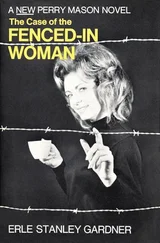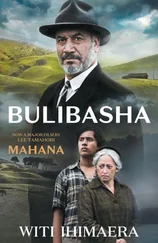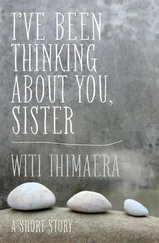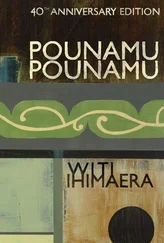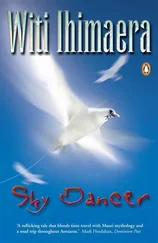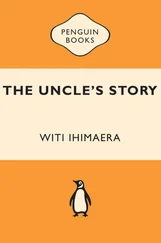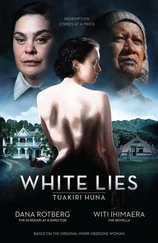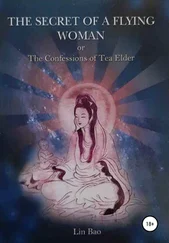Adam Gifford knocked on my door and supplied me with information on the Parihaka prisoners in Dunedin; Dick and Sue Scott read the manuscript and gave me their aroha; Bill Dacker, author of Te Mamae me te Aroha: The Pain and the Love, (1975) a history of Kai Tahu whanui of Otago, 1844–1994, took valuable time to generously assist with information that he could well have withheld for his own research and publications. Karin Meissenberg and Cath Koa checked the German reo to ensure that it conformed to the South German dialect of the period.
Grateful thanks to the University of Auckland for superlative support, and to Harriet Allan and her staff at Random House New Zealand. Harriet suggested that Anna Rogers edit the book and it has benefited from her painstaking editorial analysis.
I also record my gratitude for the funding support of the New Zealand Arts Foundation, 2009, Creative New Zealand Te Waka Toi, 2010 and the Premio Ostana (Italy), 2010.
Finally, I must acknowledge Te Haa o Ruhia and Turitumanareti, the dream swimmer. I thought you had left me forever, but you are beside me still.
CHAPTER 1: ALWAYS THE MOUNTAIN
The derivation of ‘Taranaki’: in Maori ‘tara’ means mountain peak and ‘naki’ is thought to come from ‘ngaki’ meaning ‘shining’. See ‘New Zealand Volcanoes’, on the GNS science website, www.gns.cri.nz, accessed 19 December 2009.
Erenora is the Maori transliteration of Leonore, which is the German variant of the French Eleanor, meaning ‘shining light’. Leonore is the heroine of Beethoven’s only opera, Fidelio (Op. 52), 1805–06.
The Last Samurai, Warner Brothers, 2003, was co-produced by and starred Tom Cruise and was directed by Edward Zwick. This epic film was set in the samurai culture of nineteenth-century Japan. Irony: how come the story was not set among Taranaki Maori of nineteenth-century Aotearoa? Where is Kimble Bent when you need him?
The Wiremu Kingi Te Rangitake quote, ‘I have no desire for evil …’ comes from G.W. Rusden, History of New Zealand, Chapman & Hall, 1883, Vol. 1, p. 631. The incident of the women facing off the surveyors was published in the Southern Cross and is also cited in Rusden, Vol. 1, p. 631.
For further reading on J.F. Riemenschneider see W. Greenwood, Riemenschneider of Warea, A.H. & A.W. Reed, 1957, and T.A. Pybus, Maori and Missionary: Early Christian Missions in the South Island of New Zealand, Reed, 1954.
Act One: Daughter of Parihaka
CHAPTER 2: FLUX OF WAR
The Great Maori Land March of 1975 was led by Dame Whina Cooper (1895–1994) from Te Hapua to Wellington. The marchers arrived at Parliament on 13 October where a petition signed by 60,000 people was presented to Prime Minister Bill Rowling. The march was a defining moment in Maori history, marking a new era of Maori land rights protests, and political, economic, social and cultural activism.
Horitana is the Maori transliteration of the name Florestan, who is the hero in Beethoven’s opera Fidelio . The Maori name should really be Horetana but I decided to be kind to readers by opting for Horitana, a name easier to look at and pronounce.
CHAPTER 3: TE MATAURANGA A TE PAKEHA
The incident of the rapa is cited by W.H. Skinner, Pioneer Medical Men of Taranaki, 1834–1880, New Plymouth, 1933, p. 94.
The description of Te Karopotinga o Taranaki is drawn from various sources, including G.W. Rusden, other texts listed and internet sources.
CHAPTER 4: OH, CLOUDS UNFOLD
The quote from the Nelson Examiner is cited by Dick Scott in Ask That Mountain, Heinemann/ Southern Cross, 1975/ p. 23.
The physical description and biographical information about Te Whiti o Rongomai in this chapter and throughout The Parihaka Woman, and the physical description of Parihaka, have been primarily sourced from oral information supplied by Ruakere Hond but also from G.W. Rusden and other texts listed and internet sources.
For a more comprehensive account of Titokowaru, no more fascinating account exists than James Belich’s I Shall Not Die: Titokowaru’s War, 1868–1869, Bridget Williams Books, 1989.
The description of General Gustavus von Tempsky is based on internet sources.
CHAPTER 5: PARIHAKA
The political and social contexts for this chapter have been primarily sourced from Ruakere Hond and G.W. Rusden but also Dick Scott, Hazel Riseborough’s Days of Darkness: Taranaki 1874–1884, Penguin, 2002, and others mentioned.
Dick Scott expanded his 1954 Parihaka Story into Ask That Mountain, published in 1975. There are also some radio items on Parihaka in New Zealand broadcasting archives, two of special interest by Haare Williams and Selwyn Murupaenga. I must not forget, either, Harry Dansey’s play, Te Raukura: The Feathers of the Albatross, a few years later in 1974, the first published play by a Maori.
Regarding the term ‘demilitarised Maori zone’, Rachel Buchanan alternatively offers the wording, ‘right in the middle of the confiscated zone’, in her Parihaka Album: Lest We Forget, Huia, 2009, p. 39. Take your pick.
‘The ark by which’ is cited in Dick Scott, Ask That Mountain, pp. 105–06. ‘What matters to us’: J. Caselberg (ed.), Maori Is My Name: Historical Maori Writings in Translation, Dunedin, 1975, p. 136, is cited in Rachel Buchanan, The Parihaka Album, p. 26. Both utterances were made on 1 November 1881 before the invasion of Parihaka. By the way, when you are researching you come across such good old friends, now gone. It was John Caselberg who took me over to Otakou Kaik when I was Burns Fellow at the University of Otago in the 1970s.
See Te Papa-Tai Awatea/Knowledge Net for biographical information on Alfred and Walter Burton and their photography firm; the photograph which the anonymous narrator describes is based on ‘A Parihaka scene in the eighties’, Alexander Turnbull Library, reproduced in Dick Scott, Ask That Mountain, p. 39.
‘Softly you awoke my heart’ and ‘And I, dearest wife’: the exchanges between Erenora and Horitana are modelled after the aria, ‘Mon coeur s’ouvre a ta voix’, Camille Saint-Saëns, Samson et Dalila, libretto by Ferdinand Lemaire, 1877, Act 2, Scene 3.
CHAPTER 6: A PROPHET’S TEACHINGS
Tohu Kaakahi’s haka is cited in Dick Scott, Ask That Mountain, p. 37. Maori and English from Whatarau Ariki Wharehoka, to whom Scott dedicated his book.
‘The twelve tribes of Israel’ comes from the New Zealand Herald, 21 June 1881 and is cited in Bernard Gadd, ‘The Teachings of Te Whiti O Rongomai, 1831–1907’.
‘I do not care’ is cited in Dick Scott, Ask That Mountain, p. 79.
CHAPTER 7: WHAT WAS WRONG WITH A MAORI REPUBLIC?
The 1881 census statistics come from the Auckland Star , Issue 4109, 22 June 1881, p. 3; also ‘Vital Statistics for May’, Evening Post, Vol. XXI, Issue 146, 24 June 1881, p. 2.
‘The land is mine …’ is taken from G.W. Rusden, History of New Zealand, Vol. 3, p. 261.
One surveyor reported to the West Coast Commission Report in 1880: ‘The natives came to remove my camp, and I was very much pleased with their quiet behaviour, the utmost good humour prevailing on both sides’, cited in G.W. Rusden, History of New Zealand, Vol. 3, p. 260.
‘Ich hab auf Gott’ is from Beethoven’s Fidelio, Act 1 trio.
Читать дальше

